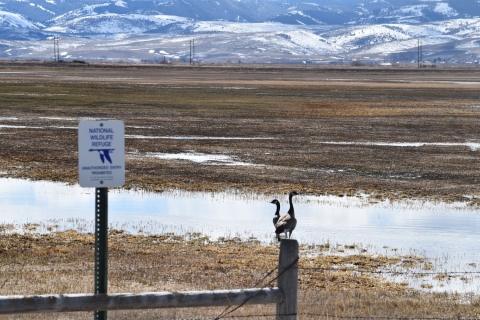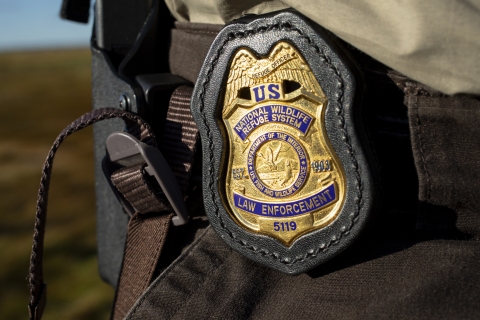What We Do
The National Wildlife Refuge System is a series of lands and waters owned and managed by the U.S. Fish and Wildlife Service. Wildlife conservation is at the heart of the refuge system. It drives everything we do from the purpose a refuge is established, to the recreational activities offered there, to the resource management tools we use. Selecting the right tools helps us ensure the survival of local plants and animals and helps fulfill the purpose of the refuge.
Management and Conservation
Priority Species
Because the refuge and surrounding area had always provided excellent goose nesting habitat, management originally emphasized Canada geese. Today, priorities have shifted to four other species whose populations have declined from historic levels: redhead and canvasback ducks, trumpeter swans and white-faced ibis.
Marsh Restoration
Since the turn of the century, human uses have led to the degradation of the quality of wildlife habitat on the refuge. Muddy water caused by carp feeding and silt from the Bear River have reduced water quality and resulted in a decline in wildlife use on the refuge. Today, you may notice water quality and wildlife differences between the Salt Meadow and Rainbow Units compared to other locations on the refuge.
Management is attempting to correct some of these problems. Diked units have been constructed to stabilize water levels for duck nesting, reduce the amount of silt deposited by the Bear River and exclude carp from the units.
Crops and Hay
The refuge cuts hay to provide short cover that is flooded in the spring to create feeding sites and rearing areas for waterfowl, sandhill cranes and ibis.
The refuge also cultivates several fields around the edge of the marsh to provide food crops of barley and alfalfa for waterfowl and sandhill cranes. They are planted on a rotation schedule to reduce the need for chemical fertilizers and herbicides. Up to 1,000 geese and 500 cranes use these crops during the spring, summer and fall. These farming operations also help reduce off-refuge crop damage caused by migratory birds.
Weed Control
Control of non-native, invasive weeds is another key management operation. Weed pests have few natural controls and can quickly replace native Idaho plants. The refuge uses selected herbicides to keep these problem plants under control.
Undisturbed Habitat
The refuge also maintains abundant habitat in an undisturbed, natural state. These areas provide tall, dense vegetation for species that prefer seclusion for nesting. It also provides escape cover from predators, such as striped skunks, raccoons, red foxes and mink.
Fire
Prescribed fire is used periodically in the more densely vegetated areas of the marsh. It creates open water ponds in the marsh after re-flooding and recycles nutrients that increase plant growth, resulting in improved habitat and markedly increased use by waterfowl.
Law Enforcement
U.S. Fish and Wildlife Service law enforcement officers have a wide variety of duties and responsibilities. Officers’ help visitors understand and obey wildlife protection laws. They work closely with state and local government offices to enforce federal, state and refuge hunting regulations that protect migratory birds and other game species from illegal take and preserve legitimate hunting opportunities.
Laws and Regulations
Seasonal hunting opportunities are offered and require appropriate State and Federal permits. Approved nontoxic shot is required for waterfowl and upland bird hunting. Contact (208-847-1757) for more details.


